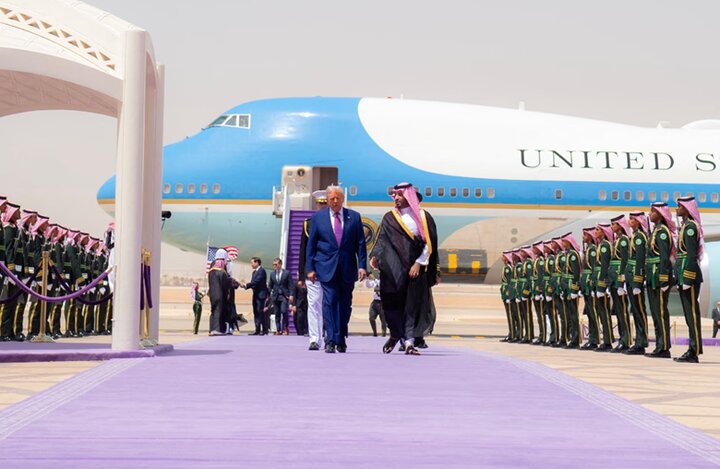Trump’s regional tour in West Asia What is America seeking in the Middle East

in recent years, many observers believed the U.S. was gradually retreating from the region, creating space for rivals like China and Russia to strengthen political and economic ties wiht regional players—exemplified by Beijing’s mediation in resolving long-standing disputes between Iran and Saudi Arabia.
Now, months after returning to office, Donald Trump has embarked on reasserting america’s position. His recent four-day trip to Saudi Arabia, qatar, and the UAE showcased this shift, marked by unprecedented economic, military, and technological agreements signaling Washington’s comeback.
Concurrently, fresh diplomatic moves toward Iran, syria, and Yemen revealed a multilayered strategy—one that goes beyond arms sales or customary security assurances to redefine washington’s role in a new Middle East order.
1. Economic Pivot: Energy, Technology & Arms as Keys to Trump’s Return
Trump’s trip highlighted economics as central to his diplomacy. In Saudi Arabia—his first stop—a $600 billion deal covered energy infrastructure defense tech including an advanced AI center in NEOM built with Google Oracle NVIDIA already operational Riyadh also received its first batch of U.S military hardware
Qatar hosted a $1 2 trillion agreement for 210 Boeing aircraft defense systems tech transfers A symbolic gift of luxury Boeing 747 from Emir sparked domestic U S backlash labeled against public interest Experts see it reflecting Gulf leaders eagerness expand ties under Trump Delivery began with Qatar eyeing regional tourism transport upgrades aiming solidify strategic economic hub status
The UAE finalized $200 billion AI data storage pact launching construction world largest data center (5GW capacity) Abu Dhabi partnered NVIDIA while receiving first shipment American chips technical prep completed operational rollout
“Think about it—this trip brought 12 times what we spent Ukraine earned billions days” —Trump Fox news interview May 19 2025
2 Diplomatic Axis: Redefining regional Ties
A major growth was lifting sanctions Syria welcomed conditionally by Damascus Treasury Department team dispatched assess gradual return US firms market Additionally Washington formally proposed Syria join Abraham Accords signaling unwavering Israel support despite omitting occupied territories itinerary highlighting Netanyahu-Trump rift
Critics like AEI s Michael Rubin called move reckless empowering Al-Qaeda given unproven leadership control even own faction Yemen saw Oman-brokered truce after failed campaigns though Gaza violence could disrupt Meanwhile indirect Iran talks via Muscat Rome described constructive though contradictions marred Trump claim formal offer made
Overall this reflects transactional pivot replacing troop deployments mediation
Security Shift Strategic Challenges
Trip marked defense policy milestone largest-ever US-Saudi arms deal ($142B) UAE Qatar advanced hardware becoming new security bulwarks against threats enhancing logistical tech presence Observers note shift direct confrontation toward diplomatic pressure economic leverage managing conflicts cost-effectively
Israel alarmed exclusion travel focus Gulf Hamas meeting prisoner case coordination snub seen troubling pivot Tel Aviv circles
Geopolitical Recalibration Americas regional Footprint
Recent claims US decline ceding space China Russia countered Trumps Arab visits showcasing renewed importance Mega-deals prove intent reclaim strategic heart Arab world via trade not troops Gulf states distancing Biden now courting core ally status lavish gifts like $400M jet underscore realignment
Ultimately Trumps mission transcended diplomacy or economics drafting blueprint influence through capital technology political clout not just force While challenges remain approach signals basic change managing West Asian interests



